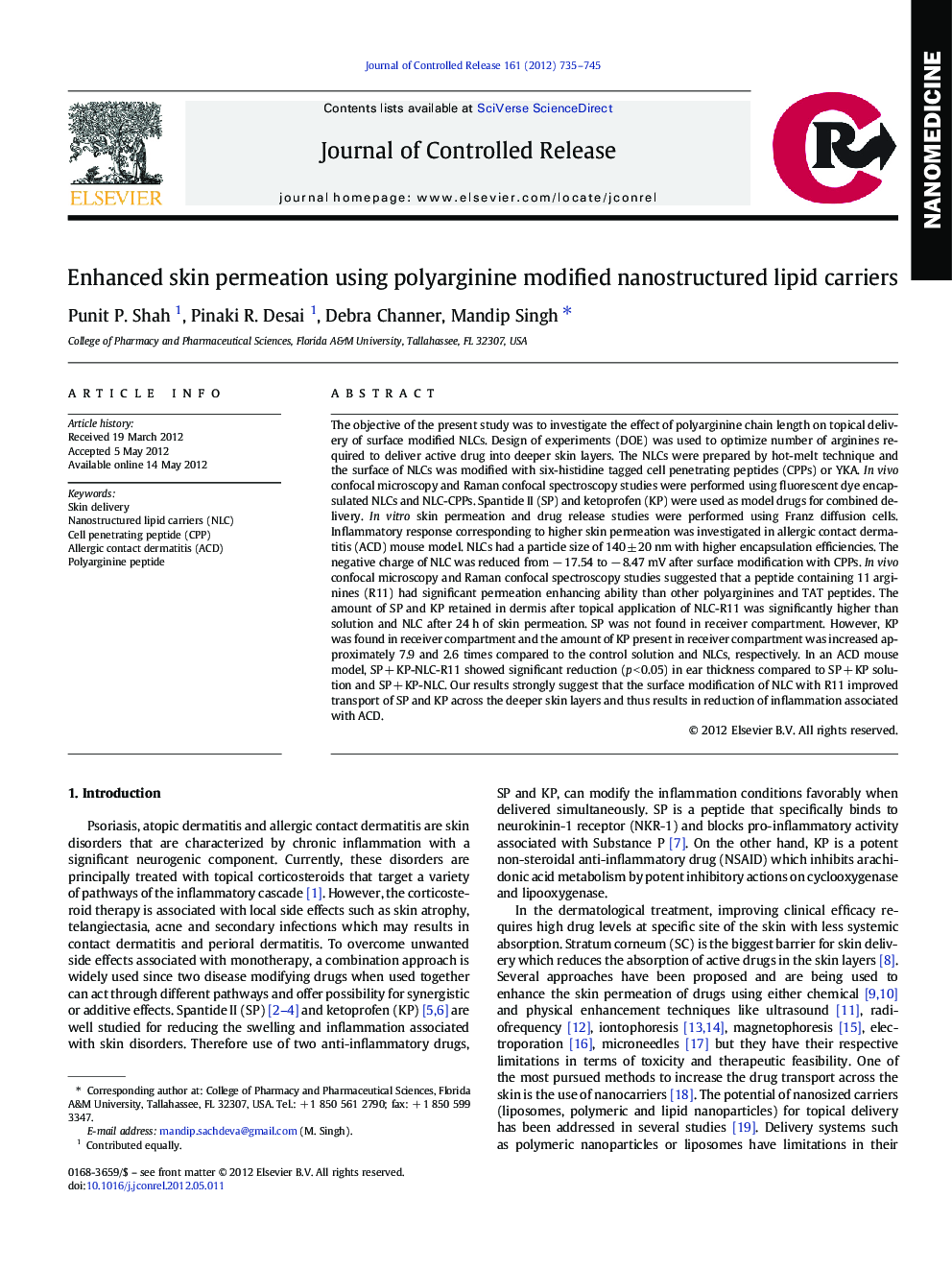| کد مقاله | کد نشریه | سال انتشار | مقاله انگلیسی | نسخه تمام متن |
|---|---|---|---|---|
| 1424330 | 986717 | 2012 | 11 صفحه PDF | دانلود رایگان |

The objective of the present study was to investigate the effect of polyarginine chain length on topical delivery of surface modified NLCs. Design of experiments (DOE) was used to optimize number of arginines required to deliver active drug into deeper skin layers. The NLCs were prepared by hot-melt technique and the surface of NLCs was modified with six-histidine tagged cell penetrating peptides (CPPs) or YKA. In vivo confocal microscopy and Raman confocal spectroscopy studies were performed using fluorescent dye encapsulated NLCs and NLC-CPPs. Spantide II (SP) and ketoprofen (KP) were used as model drugs for combined delivery. In vitro skin permeation and drug release studies were performed using Franz diffusion cells. Inflammatory response corresponding to higher skin permeation was investigated in allergic contact dermatitis (ACD) mouse model. NLCs had a particle size of 140 ± 20 nm with higher encapsulation efficiencies. The negative charge of NLC was reduced from − 17.54 to − 8.47 mV after surface modification with CPPs. In vivo confocal microscopy and Raman confocal spectroscopy studies suggested that a peptide containing 11 arginines (R11) had significant permeation enhancing ability than other polyarginines and TAT peptides. The amount of SP and KP retained in dermis after topical application of NLC-R11 was significantly higher than solution and NLC after 24 h of skin permeation. SP was not found in receiver compartment. However, KP was found in receiver compartment and the amount of KP present in receiver compartment was increased approximately 7.9 and 2.6 times compared to the control solution and NLCs, respectively. In an ACD mouse model, SP + KP-NLC-R11 showed significant reduction (p < 0.05) in ear thickness compared to SP + KP solution and SP + KP-NLC. Our results strongly suggest that the surface modification of NLC with R11 improved transport of SP and KP across the deeper skin layers and thus results in reduction of inflammation associated with ACD.
Figure optionsDownload high-quality image (269 K)Download as PowerPoint slide
Journal: Journal of Controlled Release - Volume 161, Issue 3, 10 August 2012, Pages 735–745